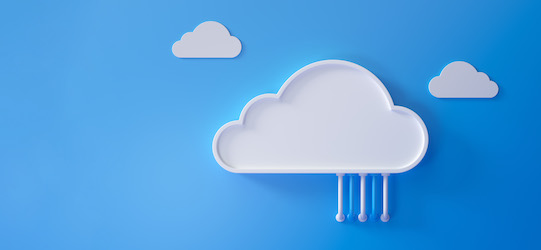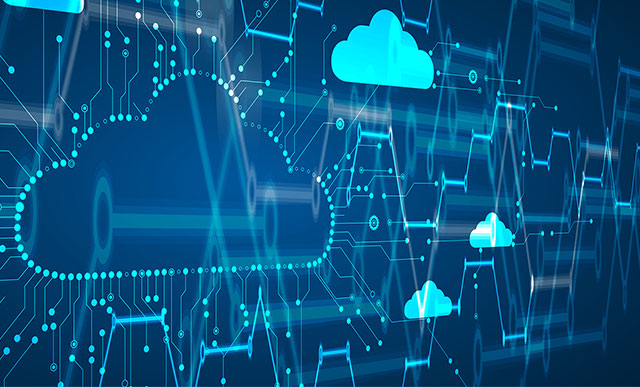Working to Address Today’s SAP Customer Challenge
Meet the Experts
Key Takeaways
⇨ Understand today’s challenges in the ERP space.
⇨ Learn about how Kyndryl and Microsoft are working with customers to address the challenges.
⇨ Explore how Kyndryl’s and Microsoft collaboration is enabling organizations to transform their businesses.
Organizations make significant investments in their Enterprise Resource Planning (ERP) systems, including infrastructure setup, system configuration, and establishing integrations with both SAP and various non-SAP applications. However, they often need to optimize their investments and focus on lowering ongoing maintenance costs, developing new technical and strategic skills, and understanding how to effectively navigate and transform their ERP landscapes. SAP Customers also find it difficult to display the tangible value of such transformations or to connect the advantages of IT with concrete business outcomes.
To understand and gain insights into the unique challenges organizations face, SAPinsider’s VP of Research, Robert Holland, talked with Madhuri Chawla, Global Head of SAP Partnership and Ecosystem at Kyndryl, and Laz Uriza, the Global Sales and Strategy Lead for SAP on Microsoft Azure to explore the effective strategies that organizations can adopt to optimize their ERP landscapes, prepare for the evolving technological advancements and transform their businesses.
SAP S/4HANA transformation – Customer Challenges
Moving to SAP S/4HANA is about transforming the entire organization, a transition that is not just an IT project but a total business transformation. SAP’s strategic shift towards RISE and the impending 2027 deadline, after which customers will incur extended maintenance costs, marks a significant challenge for many SAP customers. From a customer perspective, particularly for legacy SAP clients who have heavily invested in the perpetual license model, there is a notable part of their licenses that remain underutilized. Additionally, many have non-SAP solutions integrated with their SAP ERP systems. The key question is how these customers can migrate to the new SAP S/4HANA Cloud, private edition, leveraging their prior investments and reducing maintenance costs, especially in an industry facing widespread skill shortages.
As Madhuri Chawla, Global Head of SAP Partnership and Ecosystem at Kyndryl says, “Legacy SAP customers, who have made extensive investments in the perpetual license model, are now faced with the challenge of transitioning to SAP S/4HANA Cloud, private edition. A significant part of their challenge lies in the underutilization of their existing licenses and the multitude of interfaces they have developed with non-SAP applications. The crux of the issue is not just the technical transition to a new product but how to leverage previous investments to reduce maintenance costs and address the prevalent skill shortages in the industry. This transition extends beyond a mere IT initiative; it is fundamentally about transforming their entire business operations. The move to SAP S/4HANA necessitates a value-driven approach from business teams, indicating a shift from a purely IT-led initiative to a comprehensive business transformation strategy.”
From Microsoft’s viewpoint, this scenario presents both challenges and opportunities. Historically, SAP has been the core system for managing business processes. However, with ongoing technological innovations, SAP is evolving into a system that fosters innovation and interaction. This evolution necessitates integrating SAP with other advanced technologies, including AI and machine learning. A critical aspect of this evolution is enhancing cybersecurity measures to protect these increasingly complex systems.
As Laz Uriza, the Global Sales and Strategy Lead for SAP on Microsoft Azure asserts, “SAP has long been recognized as a system of record, expertly controlling business processes within companies. However, the landscape of enterprise software is shifting, driven by innovation and technological advancements. SAP is increasingly becoming a system of innovation and interaction, necessitating integration with other modern technologies like AI and machine learning. This evolution underscores the growing need for robust cybersecurity measures to protect these integrated, mission-critical systems, especially as they transition to more scalable cloud solutions.”
However, while the move to the cloud offers significant advantages, it presents considerable challenges. One major challenge is the skill gap; many SAP customers, accustomed to on-premise systems for decades, now face the daunting task of adapting to cloud environments, which require different skill sets and operational approaches. As Uriza comments, “This transition is not a simple plug-and-play process; it’s a complex, long-term journey that demands careful planning and support. Addressing the skills gap and understanding the necessary steps for a successful migration to the cloud are critical. This shift is more than just a technological upgrade; it is a fundamental change in how companies manage and interact with their systems, requiring a comprehensive and strategic approach to ensure readiness and success.”
Addressing Customer Challenges Jointly – Microsoft and Kyndryl
Kyndryl and Microsoft have established a strong partnership over the years, focusing on assisting organizations in streamlining their ERP environments and transitioning to the cloud. This collaboration involves helping customers simplify their complex, customized systems and integrating new business processes with enhanced technology and security. The goal is to provide seamless support from a knowledgeable partner landscape, ensuring a smooth and rapid transition for customers, minimizing any disruption in operations.
Since spinning off from IBM over two years ago, Kyndryl has leveraged its long-standing SAP expertise, spanning over 30 years, to manage complex environments for large corporations, handling both SAP and non-SAP systems. Understanding the integral aspects of these integrations, Kyndryl recognizes the need for companies to adopt cloud strategies to stay competitive.
As Chawla says, “This is not just an option anymore; it is a necessity for businesses to define their timelines and strategies for cloud migration. In collaboration with Microsoft, we aim to migrate SAP clients’ entire estates to the cloud. This process can start with specific business lines, a strategy that has proven successful. Kyndryl’s unique position in the market, especially with its recent initiative in the business transformation center launched by SAP at Sapphire 2023, emphasizes its focus on migration and modernization.”
Kyndryl utilizes its extensive experience in SAP environments, not limited to SAP S/4HANA but encompassing all traditional relational databases used by SAP, to address the skill set challenges faced by clients. This broad expertise is crucial, as SAP customers transition from diverse systems to a more uniform environment with SAP S/4HANA and the SAP HANA database.
Co-innovating to Help Customers
A critical area of collaboration between Kyndryl and Microsoft is in the cyber resiliency space for SAP and non-SAP workloads. With the increasing frequency and severity of ransomware attacks affecting various sectors like healthcare, government, and telecom, Kyndryl and Microsoft have developed a unique offering in cyber resiliency called the Kyndryl Cyber Incident Recovery Services for enterprise workloads that delivers an integrated approach to SAP services on Microsoft Azure combining SAP deployment and management with security, threat management, and recovery capabilities.
As Laz says, “The joint offering from Kyndryl and Microsoft is designed to be a value-added service for customers at any stage of their transformation journey. It is an essential investment, not an afterthought, given its significant impact on companies, their suppliers, partners, and customers.”
Kyndryl’s cyber resiliency services cater to the entire customer estate, not just SAP workloads, providing recovery assistance from cyber threats. This offering addresses a gap identified in cybersecurity research, where many respondents understood the need for attack monitoring but lacked clear action plans for post-attack scenarios.
Laz also highlights the growing importance of security in the context of increasingly integrated solutions within and outside SAP, including connected supply chains. This interconnectedness heightens vulnerability to cyberattacks. Cybersecurity is not only about detection and safeguarding but also about response protocols, system lockdowns, isolation, and recovery, especially for mission-critical systems.
“The importance of cybersecurity is paramount, especially as we advance towards more integrated solutions within and outside of SAP, including connected supply chains. This integration, while streamlining operations and uniting vendors, suppliers, and customers, also increases vulnerability to cyberattacks. Cybersecurity is essential, not just for detecting and safeguarding against attacks, but also for responding effectively when an incident occurs. This includes implementing protocols, locking down systems, isolating threats, and swiftly recovering, particularly for mission-critical systems,” says Laz.
Additionally, the integration of AI in security, productivity, and collaboration is a focus area for both the companies. Microsoft and Kyndryl are working on developing AI use cases that enhance the value of SAP, catering to both developers and users. The goal is to harness AI in various aspects to realize its full potential and value in organizations.
“The integration of AI in security is crucial to fully realize its potential and value in organizations. There is a strong focus on leveraging data within SAP systems, recognizing its immense value. Both Microsoft and Kyndryl are working on maximizing the use of this data, which is a key interest for many organizations. As the discussion concludes, the emphasis is on the ongoing challenges and the future potential of AI in enhancing the functionality and security of SAP systems,” says Laz.
Any cloud transformation is not just a technological shift; it is a complete business transformation. This requires a buy-in from all business areas as the success of such transformations depends on integrating IT and business groups, ensuring top-down support for the change. But moving to the cloud should be seen as a necessity, not an option. Organizations must be open to change and avoid applying old solutions to new problems.
While the shift to the cloud introduces a new set of challenges and opportunities, it is also important to adapt to the evolving landscape of enterprise software. This is because each SAP customer’s journey to the cloud is unique and depends on the organization’s size, location, and strategic priorities. Simply adopting technology, like moving to the cloud because everyone else is, is not sufficient. A strategy should focus on deriving inherent value, whether that is simplifying the landscape, reducing costs, or exploring new business models. Customers should have a clear objective to ensure swift and effective progress. A solid business case, aligned with the customer’s objectives, can facilitate faster and more successful adoption by all stakeholders.











